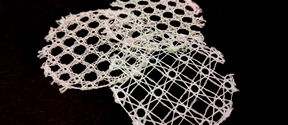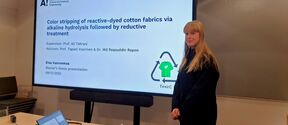Seaweed pavilion Hidaka Ohmu
The installation Julia Lohmann designed for the World Economic Forum in Davos in January 2020, is on display at the A Bloc shopping centre in Otaniemi.
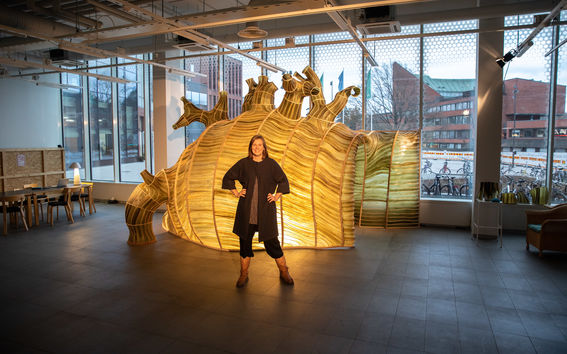
This January, more than 3,000 top leaders gathered at the World Economic Forum in Davos, Switzerland, to discuss economic, political, environmental and cultural issues of global concern.
One of the invited guests was Julia Lohmann, a professor and designer at Aalto University, who brought to Davos her huge, multisensory seaweed pavilion named Hidaka Ohmu. The structure of the pavilion is made of birch plywood and rattan with a seaweed skin that has been treated with an environmental method to keep it flexible. The method itself is still a secret, as Lohmann wants to develop it further.
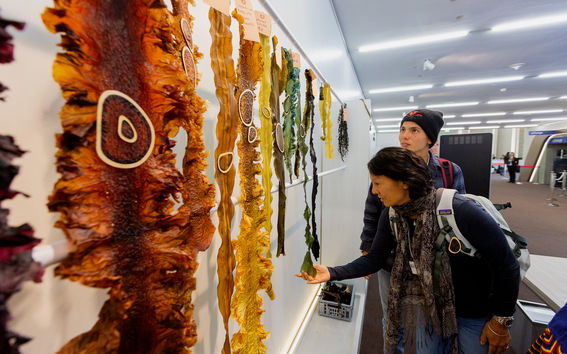
Kelp grows fast and it is an ecological material, but not at all widely used. Lohmann herself got excited about seaweed in 2007 while working as a designer in Japan, where seaweed is common as food but not at all used as a raw material. This gave rise to a radical idea: why don’t we use our vast algal reserves?
For more than ten years, Lohmann has immersed herself into seaweed research and exploring opportunities to use seaweed, as it is more than just a material: It is a means of regenerating degraded marine ecosystems. We can use it as fertiliser and turn it into bioplastic, biofuel, dyes, veneer and textiles. While it grows, it cleans the ocean of harmful excess nutrients such as agricultural run-offs and fish farm faeces.
Through her work, she wants to engage policy-makers and citizens to responsible action to protect the environment that helps rebalance marine ecosystems. In Finland, Julia Lohmann has collaborated for the Baltic Sea with the John Nurminen Foundation and the Design Museum, among others.
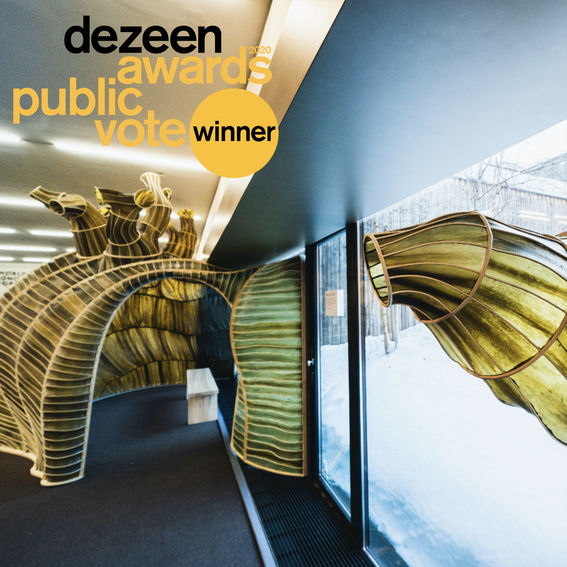
In addition to Davos, Lohmann's seaweed sculptures have gained attention and discussion at the Triennale in Milano, and Hidaka Ohmu won both the award and the public vote of the world's most popular and influential architecture and design magazine Dezeen in the category of sustainable design.
From November 16, you can see the Hidaka Ohmu seaweed pavilion and Lohmann's work in a large retail space of the A Bloc shopping centre in Otaniemi. Due to the corona restrictions, the pavilion and Lohmann’s research workshop are viewed through large shopping windows. The work is on display around the clock, and its skilful lighting is provided by Aalto Studios.
Lohmann's other seaweed installation, Oki Nakanode, will be on display at MoMa in New York on November 21 as part of the Broken Nature exhibition. The Kombu Ahtola, a hanging seaweed sculpture, is currently on show in the Criss-Crossing Ecologies exhibition at Annantalo in Helsinki (Annankatu 30) until 31 January 2021.
During the installation, the retail space will also serve as Lohmann's pop-up studio, where she will work on two research projects.
The installation is part of the EU Horizon 2020 funded research project ‘CreaTures: Creative Practices for Transformational Futures’.
The Baltic Sea Lab develops ways and concrete tools to identify and activate local communities to promote sea heath. Many people would like to do more for the well-being of the seas, but cannot find ways to do that. Scientists or authorities, on the other hand, know what should be done, but they might lack enough resources. The Baltic Sea Lab aims to connect these groups, and is part of the EU-funded Creatures research project.
CreaTures (Creative Practices for Transformational Futures) is a three-years H2020 project that explores the potential of creative art and design practices in supporting socio-ecological transformation. The project involves a consortium of 11 partners working closely together while combining their expertise from sustainability-oriented art, design, research and policy. Starting from the proposition that creative practices hold immense potential in supporting sustainable transformations but their impact is largely under-utilised, the consortium conducts a systematic practice-based interrogation to demonstrate the power of arts to move the world towards sustainability. Through direct engagement and co-creation, our Observatory, Laboratory, and Evaluation procedures bring together diverse creative projects and develop insights allowing them to focus their efforts more effectively. Drawing on evolving outcomes, we provide recommendations for policy-makers and implementers to help them see the merit of employing creative techniques. www.creatures-eu.org
CreaTures project has received funding from the European Union’s Horizon 2020 research and innovation programme under grant agreement No 870759.
The BioColour research project develops new solutions for biocolourant production, characterization and application. Forest and food industry side streams are investigated as sources for dyes and pigments as well as agricultural sources and microbes which produce colourants. The aim of the project is to create a colourful palette of yellows, reds, browns, greens, blues and blacks using bio-based dyes and pigments.
A growing interest in biomaterials and natural processes is visible in the fields of research, design and art. 19.11.-7.12.2020 Väre has an Outré exhibition on bioart. Bioartist were also winners in the recent Aalto campus art competition.
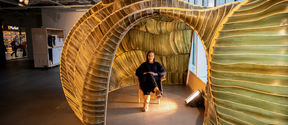
The installation Julia Lohmann designed for the World Economic Forum in Davos in January 2020, is on display at the A Bloc shopping centre in Otaniemi.

Lohmann’s magnificent seaweed pavilion won the sustainable design category for Dezeen Awards 2020.
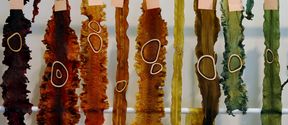
The BioColour project organizes a broad audience event on Monday 17.8, concentrating on different points of view on materiality and colour. Julia Lohmann, designer and Professor of Practice in Aalto University, is one of the project’s researchers and a speaker in the event.

The transdisciplinary project highlights how the arts can contribute to addressing climate change and associated effects. The project aims at demonstrating effective paths to achieving sustainability, social cohesion and peaceful co-existence at a time of rapid change.

Bioart exhibition proposes questions and showcases six experimental art/science projects dealing with living organisms like bacteria and cells.
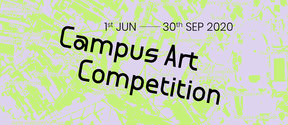
Laura Piispanen, Noora Heiskanen, Jenna Ahonen and Ayda Grisiute convinced the jury with their creativity.
